Beach Birds: Coastal Fliers and Beach Birding Locations
Updated: Jan. 21, 2022
Put your toes in the sand at these beach birding locations and grab some binoculars—you’ll want to check out these beach birds.
Dipping your toes in the ocean surf should be on everyone’s bucket list. I didn’t make it to the coast until I was in my 20s, but that first splash of California salt water is something I’ll never forget. For hours, my buddy Scott and I scampered along the edge of the water with childlike enthusiasm. We found delight in peering into tide pools and following along as sanderlings scurried in and out with every wave. The beach hosts an amazing array of creatures—especially birds. As birding locations go, it’s pretty remarkable to think that some avian species thrive exclusively along the coasts, never venturing away from the waves and sand. Yet they’re often overlooked, or dismissed as just “seagulls.” They clearly aren’t just bumming around on vacation, though. Let’s explore some of these beach birds.
Discover fascinating facts about wading birds.
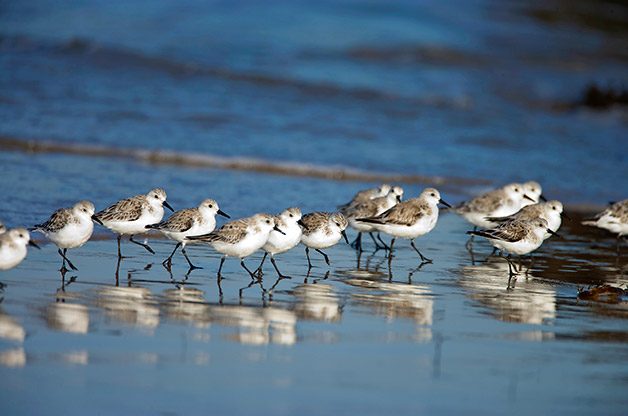
Sanderlings
Not all shorebirds live at the edge of water, but there are plenty that do depend on the shifting ocean tides. There’s a good chance your first shorebird encounter, like mine, will be with sanderlings, members of the sandpiper family. These energetic beach birds are always scuttling about, darting in to grab a bite of food before outrunning the splash of the next wave. Sanderlings breed in the high Arctic but spend winters along sandy beaches nearly worldwide.
Take our shorebird quiz to see how many species you can identify.
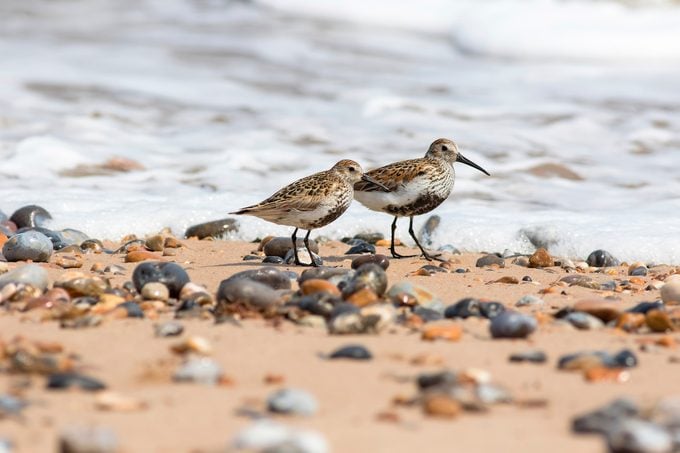
Sandpipers, Willets and Dunlins
Some of the other sandpipers to look for are least, semipalmated and western. There’s also the red knot, which has a plump body and thick black bill, and the willet, a large 15-inch bird that you can find inland in some areas as well.
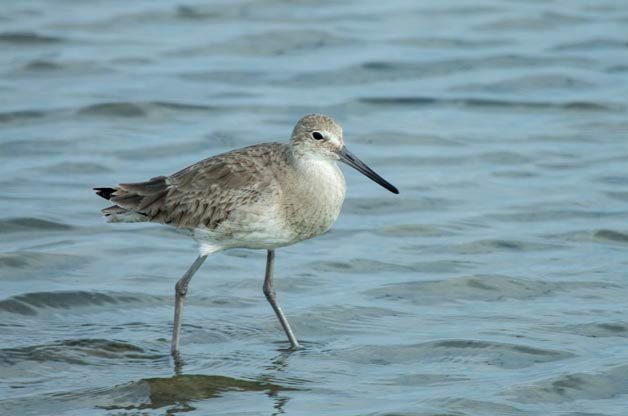
That’s just the beginning, though. The sandpiper group includes many others, which can make ID a bit tricky. But I encourage you to take on the challenge. It helps to have a good field guide with you. I personally like the Kaufman Field Guide to Birds of North America. It’s compact enough to fit in my back pocket—and, after all, Kenn Kaufman is one of the birding experts for Birds & Blooms.
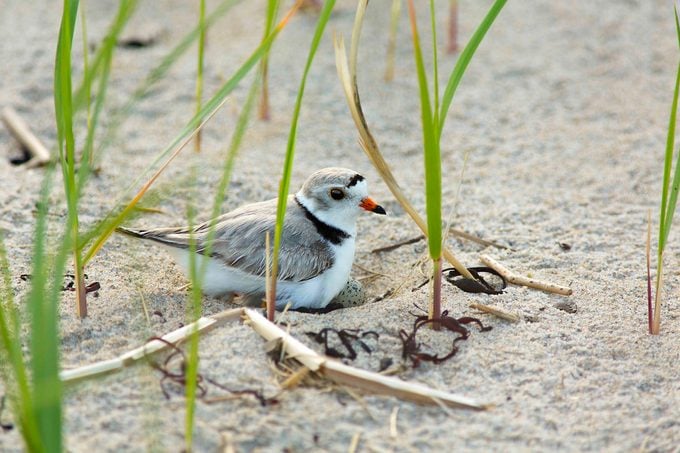
Plovers
You’re almost guaranteed a few plover sightings if you’re visiting a beach town. Some plovers make their home on the coasts throughout the year, while others breed inland and winter at the beach. The killdeer, for instance, is a widespread plover that is as much at home at the edge of a parking lot as it is along the coast. If you spot a similar-looking but smaller bird, you could be looking at a semipalmated plover. In addition to the size difference, semipalms have only one black neckband, while the killdeer has two. Another killdeer doppelganger is the rarer piping plover.
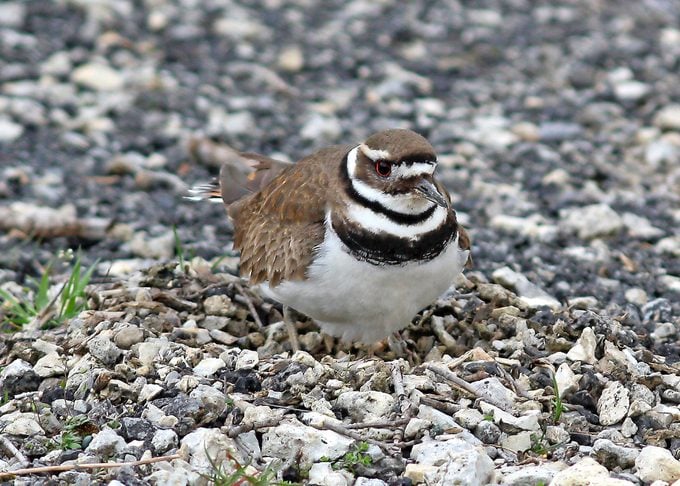
Two other coastal plovers are the Wilson’s and the snowy plover. The Wilson’s is content with coastal living year-round; it can be seen along the Gulf of Mexico and the Atlantic north to the Delmarva Peninsula. Snowy plovers are common on the Pacific and Gulf coasts, but their breeding grounds are also scattered through the western interior of North America.
One more to look for is the black-bellied plover. Don’t let its name fool you—it doesn’t always have a black belly. It does always have black wingpits, though. These stout-bodied birds have short, thick bills; they winter along both coasts and the Gulf of Mexico, where they thrive on small invertebrates.
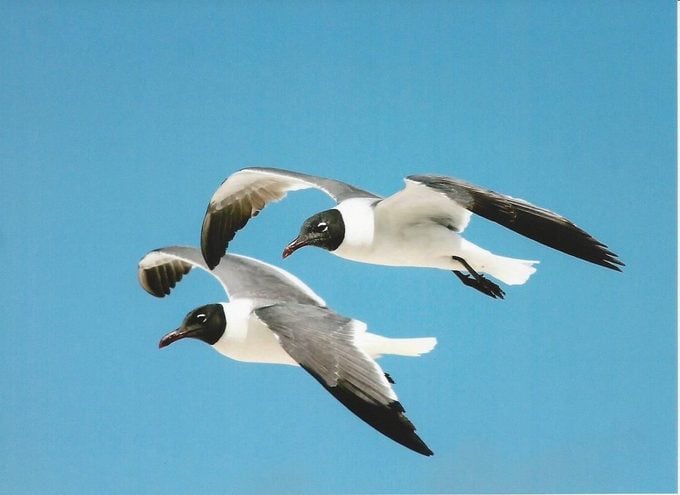
Gulls, Terns and Skimmers
Although there’s no such thing as a “seagull,” there are many gulls that live by the sea. Laughing gulls in the East and glaucous-winged, western, and Heermann’s gulls in the West are species with limited ranges along the coasts. You’re likely to see the more widespread ring-billed and herring gulls at the beach, too.
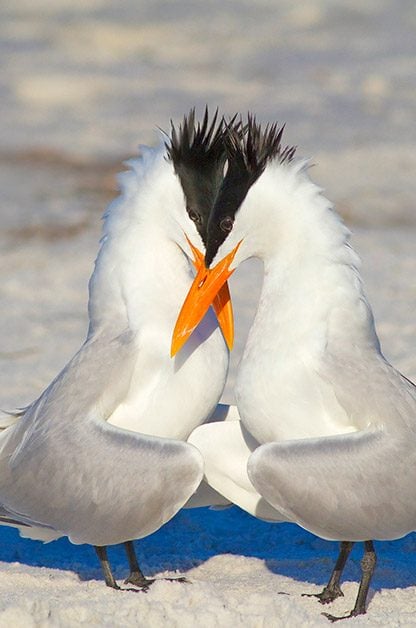
Terns are another group of conspicuous, mostly white coastal birds. They generally have thinner wings and appear daintier in flight than their relatives the gulls. Nearly a dozen species of terns can show up along the shore at some point. The species largely limited to coastal zones include the royal, elegant, roseate, sandwich and the somewhat confusingly named gull-billed.
One highly specialized relative of the terns is the black skimmer. When foraging, the skimmer flies with its long lower bill in the water, trolling for minnows.
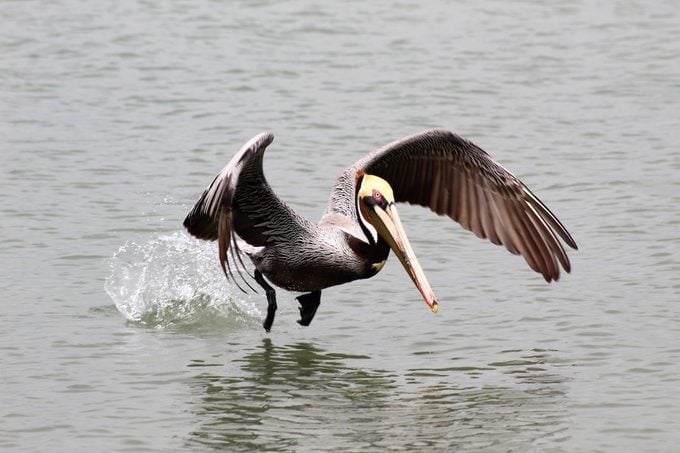
More Beach Birds: Pelicans and Oystercatchers
Some of the most familiar birds of the coasts today, brown pelicans were once rare. It’s fun to watch them plunge headfirst into the water to feed. Look for American white pelicans, too.
Other standouts are the black oystercatcher of the Pacific and the American oystercatcher of the Gulf and Atlantic coasts. Both sport massive orange bills that may look cartoonish but are essential in prying open oyster, mussel, clam and limpet shells.
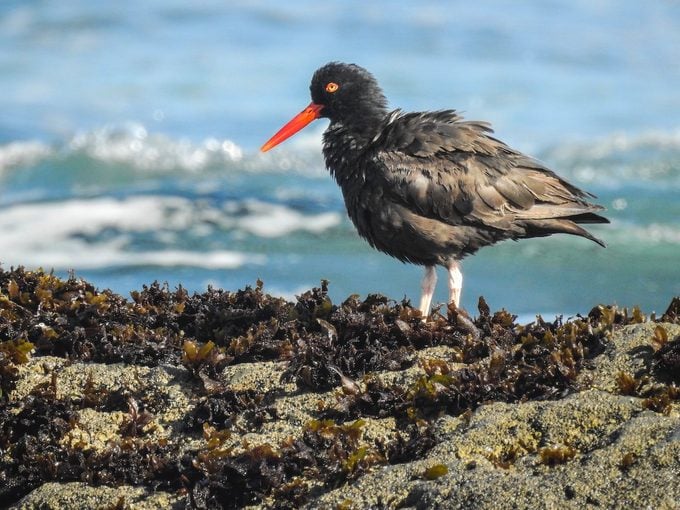
Whether you’ve lived on the coast your entire life or are visiting for the very first time, you can’t help but notice that the seacoast is a special place. If you make your next vacation a coastal trip, you’re sure to spot many of these intriguing beach birds. Check out the top birding trips to escape the winter months.
Beach Birding Hotspots
Take a look at some of the best places in North America to see shorebirds and beach birds.
- Glacier Bay National Park, Alaska: With nearly 1,200 miles of coast, Glacier Bay provides ample opportunity to watch birds, along with the added bonus of the chance to see bears and glaciers.
- Point Reyes National Seashore, Point Reyes Station, California: Nearly 490 bird species have been recorded at Point Reyes National Seashore, making it a premier coastal birding location along the West Coast.
- J.N. “Ding” Darling National Wildlife Refuge, Sanibel, Florida: Named for the renowned political cartoonist, J.N. “Ding” Darling National Wildlife Refuge is critical habitat to a few species of sea turtle and plenty of beach birds.
- Chincoteague National Wildlife Refuge, Chincoteague Island, Virginia: Be it the Chesapeake Bay or the Atlantic Ocean, you’re never far from water anywhere along the Delmarva Peninsula, and Chincoteague is in the middle of the coastal birding action.
- Prince Edward Island National Park, Canada: A habitat for numerous bird species, this national park along the north coast of Canada’s Prince Edward Island is also where you’ll find Lucy Maud Montgomery’s childhood home, made famous in her book, Anne of Green Gables.
